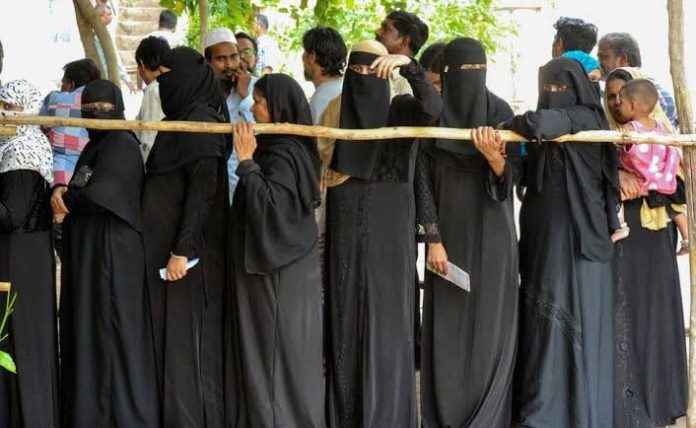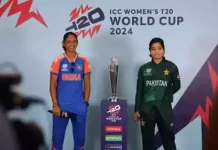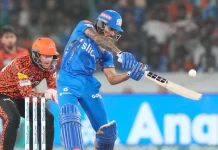This is Not sprint but a marathon race
The leadership of Indian Muslims is in South, not in North India, But no Pan– India leader from the community
By Abdul Hafiz lakhani/Choudhary Shoeb
Indian Muslim’s political representation is always debatable issue as despite largest minority in the country, Muslim are always politically weak and have not able to make any impact on Indian parliamentary system. Last atleast two decades are totally very much left to be desired.
India’s Muslim population is rising. In 2015, their number stood at 195 million, which, due to high birth rates, has almost doubled since 1991, according to the Pew Research Center. Their share has increased from 12% to 15% in this time period. By 2060, Pew estimates, there will be more Muslims in India than anywhere else in the world (Indonesia has more today), and they will constitute 19% of Indians.
At the same time, the share of Muslims in the Lok Sabha, India’s 545-seat lower house of parliament, is in decline. Muslims have always been underrepresented here, but they are currently at a 50-year low. In the 1980 election, almost 10% of those elected were Muslim. In 2014, it was less than 4%.
The 2019 national election of 17th Loksabha, 27 Muslims MPs are elected, slight better than 2014 which had seen 23 MPs.
Researchers of Indian politics think that Hindu majoritarianism and the rise of the Bharatiya Janata Party (BJP), the current ruling entity, is at least partly responsible for the decline, with important repercussions for Indian public policy.
Historians believe Islam first came to the Indian subcontinent in the 7th century. Over the next thousand years, Muslim rulers from central and west Asia would come to take over large parts of modern day India, promoting Islam, leading to many converts.
In the 18th and 19th centuries, the British colonised the subcontinent. In the fight for independence, Muslims would be major participants (paywall). When independence was won, the colony was divided into two states, India and Pakistan. India, with a Hindu majority, but large numbers of Muslims and other religious minorities, would be a secular state. Pakistan, which then included what is now Bangladesh, would be an Islamic republic.
About 35 million Muslims remained in India after partition. That population was and still is mostly concentrated in northern part of the country in the Ganga river basin, which includes the states of Uttar Pradesh, Bihar, and West Bengal. About half of the country’s Muslims are in those three states alone. Still, nearly every part of the country has a significant Muslim minority. Of the 16 states with over 30 million people, only Odisha and Punjab are less than 5% Muslim.
The first election to the Lok Sabha happened in 1952. Of the 489 elected members, only 11 were Muslim, according to India Today. Over the next 30 years, those numbers would rise, peaking in 1980.
The increase was mostly due to great numbers within the Indian National Congress (INC), the party of Mahatma Gandhi, and the dominant political party of India after independence. Up to 30 of the 49 Muslim representatives in 1980 were members of the INC. The only other long-running parties that have consistently had more than one Muslim member are the communist parties and the Jammu & Kashmir National Conference, according to data from the Trivedi Center for Political attributes the large representation of Muslims in 1980 to the fragmentation of Indian political parties in the late 1970s and early 1980s. With no party dominating politics, there was more of an effort to reach out to the Muslim community, and other minority groups, to cobble together a winning constituency. As a result, parties were more likely to give Muslims a chance to be their candidate.
Research by political scientists Christophe Jaffrelot and Gilles Verniers, who have studied this matter, points to one major reason for their decline: the rise of the BJP.
Founded in 1980, the BJP first ran candidates in the 1984 national election, winning just two seats. But the party would grow quickly. By 1998, it would lead a coalition government running the country, and in 2014 it won an outright majority under the leadership of current prime minister Narendra Modi.
The BJP’s social policies are Hindu nationalist, promoting a Hindu-based cultural conservatism over westernization and secularism. Many Hindu nationalists express the idea that Muslims can never be truly Indians because, unlike Hindus, their holy sites are not in India. The BJP’s growth was catalyzed by the demolition of the Babri Masjid in 1992, a mosque that many Hindus consider to be on Hindu holy ground, and the 2002 riots in which over 1,000 people, most of whom were Muslims, were killed in the state of Gujarat (Modi was the state’s chief minister when this violent episode occurred).
The economic ideology of the party has shifted over the years. Currently, they are a difficult-to-pin-down combination of pro-market and anti-red tape, but also populist when it comes to policies to support India’s large number of agriculture-dependent poor.
Unsurprisingly, the BJP has had few Muslim candidates. Jaffrelot and Verniers point out that, since 1980, the party has put up only 20 of them for general elections, just three of whom have won. Of the party’s 282 current Lok Sabha members, none is a Muslim—the first time in the history of independent India that a winning party has had no Muslim members.
Nearly all of the decline in Muslim representation has come from fewer members from the states of Madhya Pradesh, Maharashtra, and most importantly Uttar Pradesh. The BJP has recently grown more powerful in Uttar Pradesh, India’s largest state and a bellwether (paywall) for its national elections. In concert, the number of Muslim members of parliament from here fell from 18 all the way down to 0 in 2014, when the BJP won 71 out of the 80 seats allotted to the state. Around 20% of Uttar Pradesh’s population is Muslim.
The 2019 election result was a crucial, perhaps death bell moment for Muslims in India. Another BJP landslide victory better than 2014 had damaged, could further sidelining of the country’s biggest minority.
Indian Muslims — million is a mind boggling figure and just to put in perspective, almost equal to the population of 20 Arab countries, more than England, France, Italy put together.
There is no way Indian Muslims could face a similar fate of their brothers in Andulus, or of Myanmar unless they actively try to go that path.
Indian Muslims have resources, numbers and just need the will to fight it out. These testing times will make ummah stronger and God willing, new leadership will emerge. The status quo is horrible and need to be changed, perhaps this is God sent opportunity.(Recent Saheen Baug Protest showed the way)
The leadership of Indian Muslims is in South, not North and Kerala Muslims have shown Indian Muslims the path, be close to other communities of every state, learn their language and play active part in local politics. Think beyond Muslims and be a problem solver. Add value of our presence to our people (people of your state, city, locality) be benevolent and empathize with one and all.
This is not a sprint race but a marathon and those with patience, perseverance and grit will succeed.
Please remember for Muslims there is never a defeat, the success has a very different connotation and we must understand it.
The problem of Muslim voters is compounded by the fact that they do not have a pan-India leader from the community.
Since Independence, Indian Muslims have largely backed secular formations like the Congress, SP, BSP, Trinamool and RJD. But while these parties have talked about protecting Muslim interests, they have been less forthcoming in giving them proportional representation.
Muslim representation in Parliament between 1952 and 1977 when the Congress dominated the Lok Sabha, hovered between two and seven per cent. The highest it touched-10 per cent in 1980– was still less than the percentage of Muslims in the overall population. Rajiv Gandhi’s landslide win in 1984 had only 46 MPs.
The loss of faith in the Congress and the subsequent failure of regional secular parties have resulted in the growth of several Muslim-centric parties such as the AIMIM, the Indian Union Muslim League and the All-India United Democratic Front. But these parties have remained region-specific. The AIMIM may be the most vocal about Muslim issues identity, security and violence over cow slaughter and trying to expand its footprint into Maharashtra, UP and Bihar, but has so far remained confined to Hyderabad. On paper, India has at least seven Muslim political parties.
In the 17th Lok Sabha parties these parties including the AIMIM have four seats among them from three states-Kerala, Telangana and Maharashtra.
There are several myths about the voting behaviour of Indian Muslims-how clerics influence their choice and how they are more concerned about religious issues while voting. Various studies also indicate that though Muslims defer to the ulema’s opinion in matters of religion, their participation in political discourse is not welcome. A 2015 CSDS study says that 43 per cent of Muslims disapprove of religious leaders supporting political parties.
What is encouraging, though, is that the low representation in Parliament and assemblies and the numerical disadvantage have not bothered Muslim voters, who often outnumber their Hindu counterparts in participation in the electoral process. This political engagement is crucial for the survival and strengthening of Indian democracy (with media Input). www.siyasat.net is Ahmedabad,Gujarat, India based website.



































